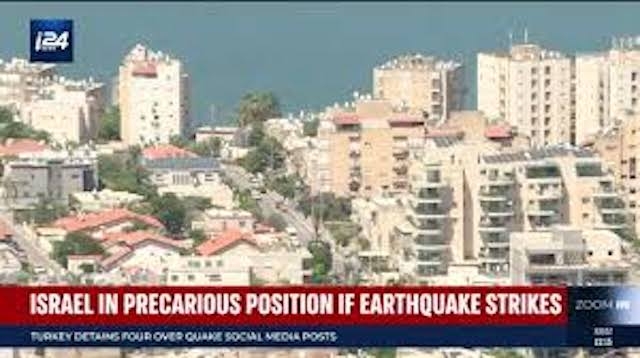The Israeli Ombudsman, Matanyahu Englman, published a new report on Tuesday dealing with the readiness of the State of Israel for future severe earthquakes, and the data that emerges from it is disturbing. Based on his conclusions of the report, it appears that there has been a long-standing failure in the preparation of the state and all the professional authorities for earthquakes, and in particular in northern peripheral cities located near and along The Syrian-African rift; cities like Beit She'an, Tiberias, Safed, Hazor HaGalilit and Kiryat Shemona.
The current report was published five years after the audit conducted by the previous State Comptroller Yosef Shapira when it was determined that the State of Israel is not prepared for a strong earthquake and its ability to deal with damages is particularly limited. Last month an earthquake measuring 7.8 on the Richter scale hit the border between Turkey and Syria. The earthquake struck many cities in southern Turkey and northern Syria and was also felt in most countries of the Middle East, from nearby Greece and Cyprus to even southern Russia.
State Comptroller Matanyahu Englman warns in a report that 93% of at-risk buildings in northeast Israel are prone to collapse in the event of a strong earthquake.
— Dr Alexa KAPLAN / Translator and Interpreter.. (@AmyrDarya) March 15, 2023
The report comes a month after a powerful earthquake struck Turkey and Syria, killing over 50,000 people. pic.twitter.com/7JSaDVyKOr
Over fifty thousand people were killed and over one hundred twenty thousand were injured. Since then, small earthquakes have been felt several times in Israel as well, and have slightly raised awareness of the issue in the media, when according to estimates based on the history of the region, a strong earthquake will occur in the coming years. Since an earthquake cannot be prevented or anticipated, experts in the field have recently emphasized the necessity of preparing the country for such an event by strengthening old buildings, training teams, and preparing plans for emergency scenarios, with the goal of reducing the extent of the damage.
The ombudsman’s report shows that in those five municipalities that will be particularly severely affected, the “TAMA 38” program, which was originally intended as a plan to strengthen older buildings against earthquakes, was not implemented at all; leaving 93% of those buildings at risk. "The main argument against TAMA 38 is that it has become a tool for urban renewal in the center of the country instead of a tool for strengthening buildings in dangerous and vulnerable areas”, Englman states in his report.
State Comptroller Matanyahu Englman believes that casualties from a future earthquake could be 7,000 people. The same number as Revelation 11:13 concerning a future earthquake that will occur in Israel during the tribulation. https://t.co/gNjySPkugP
— Himitsu | End Times Study (@HimitsuStudy) March 1, 2023
In his recommendations, Engelman emphasizes that Prime Minister Netanyahu, and the Minister of Defense, Construction and Housing, Interior, and Finance, as well as the Interministerial Steering Committee for Earthquake Preparedness, should work to promote the preparedness of the State of Israel and the local government to deal with earthquakes, in particular in those five peripheral local authorities located along the Syrian-African rift line. He further notes that his recommendations should be implemented “sooner rather than later.”


